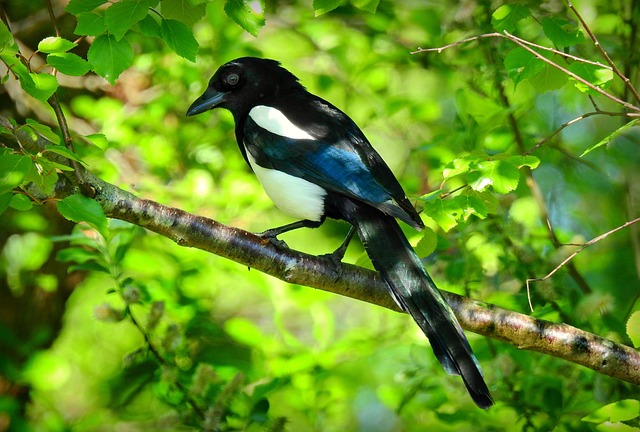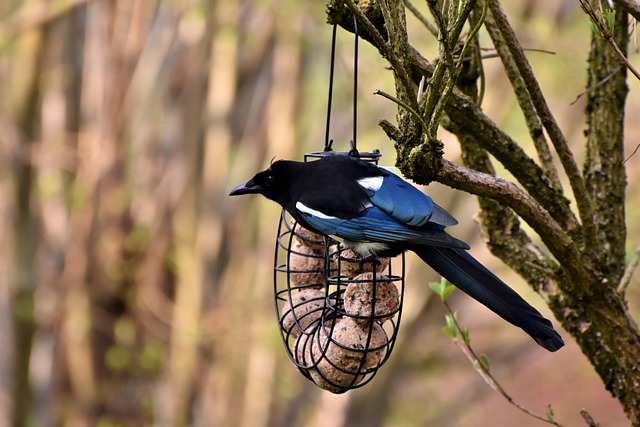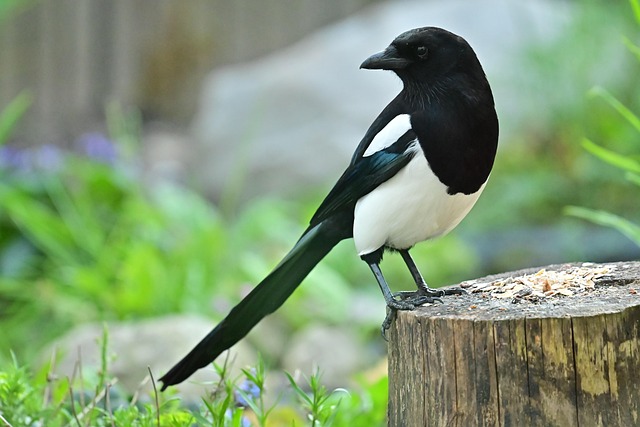The magpie bird is among the most intelligent and most strikingly gorgeous birds on earth. Characterized by its very bold black-and-white coloration and outstanding problem-solving capacity, the magpie belongs to the Corvidae family of birds, including crows, ravens, and jays. These birds have long been a subject of interest for bird observers, researchers, and people who study folklore because of their social behavior and intriguing habits.
Magpies are often associated with superstitions, legends, and even scientific studies that highlight their cognitive skills. In this blog, we’ll explore everything about magpies, including their complete biodata, interesting facts, and their ecological significance.
Know Everything About Magpie Bird

| Attribute | Information |
|---|---|
| Scientific Name | Pica pica |
| Common Name | Magpie |
| Family | Corvidae |
| Order | Passeriformes |
| Class | Aves |
| Kingdom | Animalia |
| Phylum | Chordata |
| Habitat | Woodlands, parks, gardens, farmlands, urban areas |
| Geographical Range | Europe, Asia, North America, and parts of Africa |
| Coloration | Black and white with iridescent blue-green tail feathers |
| Size | 40-50 cm (16-20 inches) |
| Wingspan | 52-62 cm (20-24 inches) |
| Weight | 150-250 grams (5.3-8.8 ounces) |
| Lifespan | 8-15 years in the wild; up to 20 years in captivity |
| Diet | Omnivorous (insects, small mammals, fruits, seeds, carrion) |
| Nesting Habit | Builds large dome-shaped nests in trees |
| Clutch Size | 5-8 eggs |
| Incubation Period | 16-21 days |
| Fledging Period | 3-4 weeks |
| Social Behavior | Highly social, often seen in groups |
| Communication | Complex vocalizations and mimicry |
| Intelligence Level | Extremely high; capable of recognizing themselves in mirrors |
| Migration Pattern | Generally non-migratory but may move based on food availability |
| Predators | Hawks, owls, foxes, and domestic cats |
| Defensive Mechanism | Alarm calls, mobbing behavior against predators |
| Symbolism | Seen as omens of good or bad luck in different cultures |
| Domestication | Not commonly domesticated but can be tamed |
| Unique Traits | Known to collect and hoard shiny objects |
| Mating System | Monogamous; pairs mate for life |
| Parental Care | Both parents participate in raising chicks |
| Threats | Habitat loss, hunting, and predation |
| Conservation Status | Least Concern (IUCN) |
| Role in Ecosystem | Scavenger, helps control pest populations |
| Common Subspecies | Eurasian magpie (Pica pica), Korean magpie (Pica sericea) |
| Flight Style | Strong, direct flight with intermittent gliding |
| Molting Season | Late summer to early autumn |
| Brain-to-Body Ratio | Comparable to great apes |
| Tool Use | Observed using sticks to extract insects |
| Memory Skills | Can remember faces and locations for years |
| Territoriality | Strongly territorial, especially during breeding season |
| Vocal Abilities | Can mimic human speech and environmental sounds |
| Cognitive Tests | Capable of problem-solving and delayed gratification |
| Foraging Behavior | Opportunistic, adaptable to various food sources |
| Egg Description | Bluish-green with dark speckles |
| Chick Appearance | Initially featherless, then develop dark down |
| Winter Adaptation | Stores food to survive harsh winters |
| Flock Name | A group of magpies is called a “parliament” |
| Cultural References | Featured in literature, folklore, and superstitions |
10+ Amazing Facts About Magpie Birds

- Highly Intelligent: Magpies are one of the very few non-mammals known to pass the mirror test of self-awareness.
- Mimicry Ability: They have the ability to mimic human language, just like parrots.
- Symbol of Superstition: Magpies have been linked with omens—good or ill fortune based on the number observed in some societies.
- Lifelong Partners: Magpies mate for life and exhibit strong monogamous ties with their partners.
- Problem-Solving Skills: They have been shown to utilize tools in order to find food, highlighting advanced problem-solving abilities.
- Hoarding: Magpies are renowned for hoarding bright objects, though more recent research indicates that they are careful rather than inquisitive around them.
- Sociable Nature: They occur in groups that have a predetermined hierarchy and collaborative behavior.
- Call Range: Their calls encompass an array of sound, ranging from alarm calls and territorial songs through to mimicry.
- Aggressive Defenders: During breeding season, magpies may be extremely defensive about their nests and will swoop down at humans or animals approaching too close.
- Funerary Behavior: Magpies have also been known to congregate near their dead, which is understood by some scientists as mourning behavior.
- Playful Nature: They are commonly known to play by themselves and other birds, suggesting their intelligence level and socialization.
Conclusion
The magpie bird is undoubtedly one of the most captivating bird species, combining beauty, intelligence, and mystery. From their capacity to mimic and imitate sounds to their skills in problem-solving, magpies exhibit exceptional cognitive capabilities that compare with some mammals. Their position in folklore, combined with their ecological role as scavengers and insect regulators, contributes to them being a species that should be admired.
Whether you view them as omens of good fortune or as merely fascinating birds, one thing is for sure: magpies will continue to fascinate and inspire humans everywhere. The next time you catch a glimpse of a magpie, take a moment to watch its actions—you may just see something absolutely amazing!









